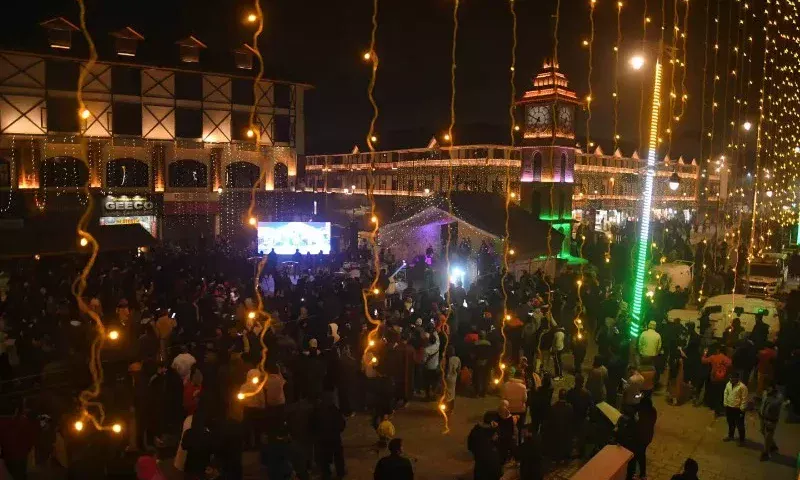‘It is an art of joining together geometrical shaped wood to construct intricate ceiling’
In Eid Gah downtown area of summer Srinagar, Imran Ahmed Sofi is carving intricate designs on the small hexagonal shaped wood. Next to him, sits his worker who with every stroke smoothen the wood so that designs could easily be carved. The room is full of wood pieces, Khatamband designs and the dust lingers in the air.
Imran has been associated with the craft of Khatamband from sixteen years. Watching his father and grandfather doing the craft, his interest grew in it.
Being one of the famous Khatamband makers in Srinagar, he claims that he has made Khatamband ceiling of famous shine, Khankha Moula.
While flipping the pages of catalog of Khatamband designs, he point and says, “We have made this design for Khankha Moula and then other artisans did paper machie on it.”
Khatamband is the art of joining together geometrical shaped wood to construct a ceiling. It is done on walls as well. For making Khatamband, special kind of wood particularly Fir wood is used for its properties of being light.
The craft is believed to come from Persia in the 14th century. The Khatamband has got more than 60-70 different designs. Panchmuraba and Chaar Phool are mostly in demand. The wood is known for its insulation property, keeps the rooms warm in winters.
Imran says, “The wood should be light so that the wood pieces can hold each other without falling down, since glue or adhesive is not used. At some places, small nails are used to tighten the wood pieces up.”
Instead of Fir wood, Deodar is also used in making up Khatamband. Imran says that Deodar, being expensive is used on demand from customers.
For making Khatamband, Imran says Government provides wood which lasts for twenty days only. “We have no other option but to purchase wood on our own, whose price is always soaring,” he says.
Another artisan, Arshid Hussain of Budhu Khatamband has been associated with the craft from twenty years. He has learnt the craft from his grandfather as his father was a lecturer. His inspiration, his grandfather had drawn him into the craft
To tackle the inadequacy of wood, he says that he chooses the good stuff from the wood which is supplied to mosques for hamams.
While talking about the richness of the craft, he says that he has moved to Delhi and other states where he gained appreciations for the craft.
He adds, “Many artisans who are known to us have reached Qatar and Pakistan and have earned lot because of the rich craft.”
“The only problem we face is the non-availability of raw material. The craft is so rich that all the unemployment of the Downtown will go away, if government can provide us raw material,” he says.
Another reason for the decline of the craft, he stated is that some artisans work on fewer wages. “The government has prescribed us rates but some artisans work on less than that which puts us on loss,” he says.
In old city Srinagar, the areas of Eidgarh and Safakadal are famous for the Khatamband artists.
Another artisan, Mohammad Ashraf of Gousia Khatamband says that the art is struggling for its existence. He says that 10-20 families around Eidgarh have left the craft.
“The present generation is taking up other jobs because government has failed to acknowledge us. Kashmir art is dying a slow death and soon our culture, tradition and heritage will be no more,” he laments.




